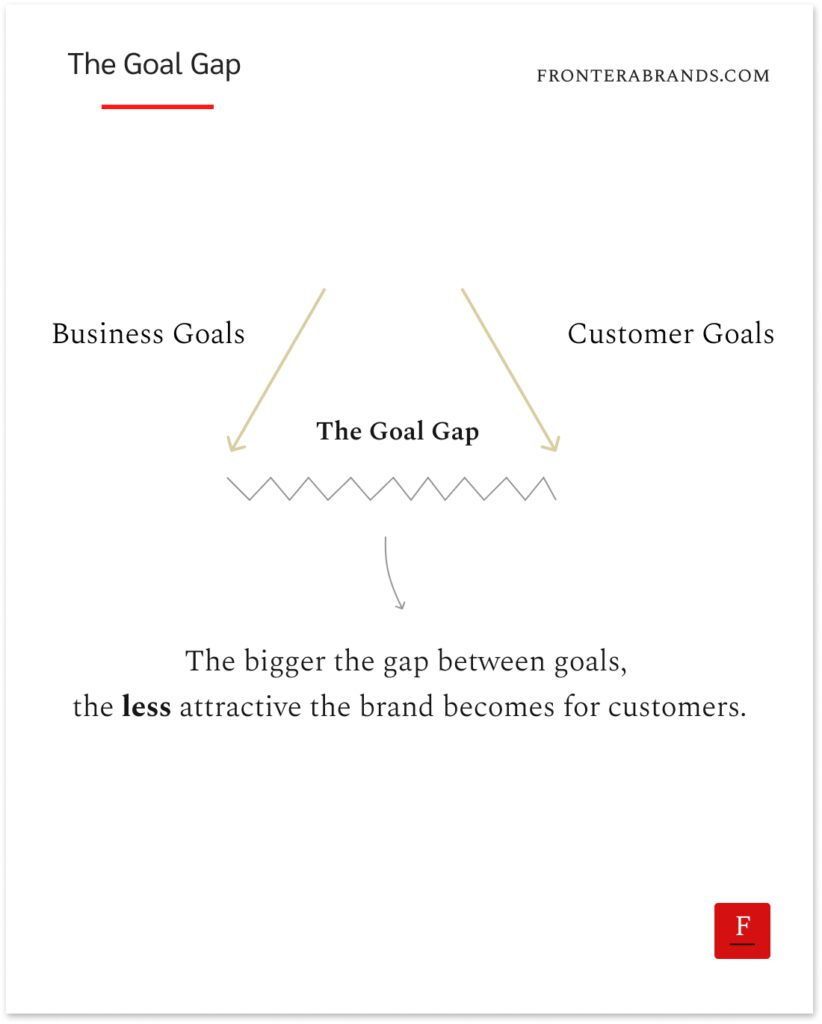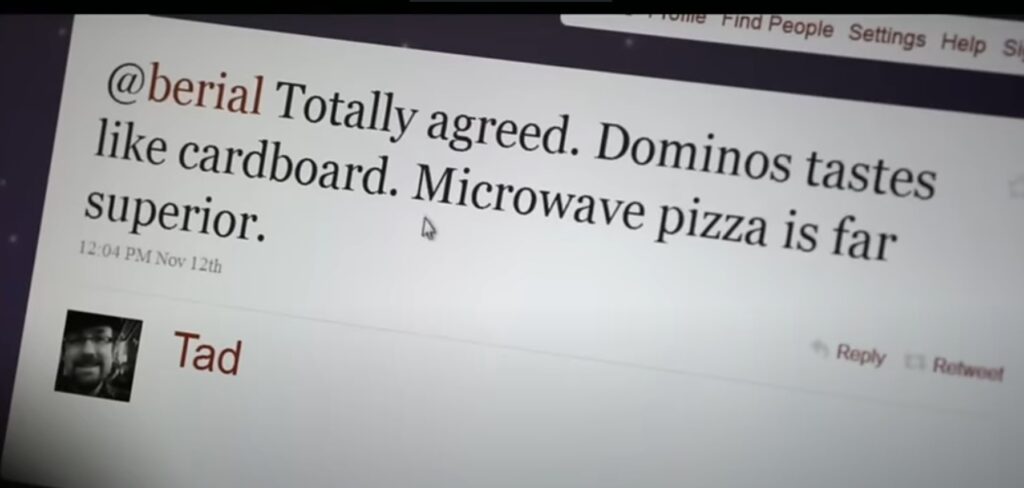In 1977, British Rail decided to do something about declining passenger numbers.
Their executives couldn’t find a clear reason why results were getting worse.
So they blamed marketing and decided to change their advertising agency.
And as it’s a huge company, all advertising agencies in the UK competed to get the British Rail account.
One of them was Allen Brady Marsh (ABM).
They were smaller than their competitors.
But one of their partners (and their creative director) Peter Marsh was a good showman.
So he wanted to do something different for their pitch to British Rail executives.

In his book Predatory Thinking, Dave Trott tells the story of the pitch.
British Rail executives arrive at ABM’s office at the meeting time.
But nobody is there.
The reception is empty.
They start waiting and have a look around.
It’s one of the worst offices they have ever been to.
Old sofas, a dirty coffee table, and cigarette butts on the floor…
They look at each other in shock but don’t say anything.
After ten minutes, a lady appears.
But she ignores them.
And she sits behind the reception desk and starts reading a magazine.
British Rail chairman Sir Peter Parker coughs to catch her attention.
Nothing.
So Parker cannot wait anymore and tells her they have a meeting with the ABM team.
The lady says: “Be with you in a minute.”
He says: “But our meeting was at…”
She replies: “Don’t you see I’m busy?”
The chairman can’t take it anymore: “This is unacceptable. We’ve been waiting 15 minutes, we are leaving.”
And right when British Rail management starts walking out, a door opens and ABM’s creative director Peter Marsh comes in.
He shakes everybody’s hands and says:
“Gentlemen, you’ve just experienced what the public’s impression of British Rail is. Now, if you’ll come this way, we’ll show you exactly how we’re going to turn that around.”
And the ABM team makes a presentation to show how they’d change everything if they were to work together.
The result?
ABM got the British Rail account and had them as a client for 10+ years.
The gap between business goals and customer goals
Now, we could talk more about the brilliant pitch of ABM and they got the client using the Isolation Effect.
But let’s focus on the British Rail executives for a second.
ABM’s pitch showed them how disconnected they were from customers.
To those executives, customers only meant numbers on the balance sheet.
They made their decisions in meeting rooms.
They had no idea what was happening on the field.
So their goals had become disconnected from their customers’ goals.
But when ABM showed them customers’ perspective of British Rail — the reality hit them like a train.
Executives had one perception of British Rail in their minds, based on their goals.
Customers had another.
So that gap caused passengers to stop using British Rail.
Their previous advertising didn’t work either, because what they said in the ads didn’t match what customers saw interacting with the brand.

Have you heard about what Domino’s Pizza did in 2009?
You know how they became a big chain.
They differentiated themselves with the delivery speed and became known for their “30 minutes or free” guarantee.
But over time, they started focusing too much on themselves.
They were worried about how to expand faster.
They were worried about reducing costs.
In the process, they forgot the basics.
They started using inferior ingredients, in fewer amounts.
Because they were focused on their internal goals too much (reduce costs, increase profits per branch, etc.).
So their pizza became terrible.
Hence it started showing in their results.
Customers didn’t expect a Michelin-star pizza Napolitano from Domino’s.
But they didn’t want to eat a pizza that tasted like paper either.
In 2009, their CEO acknowledged it.
They made a campaign to show that they “heard” customers and they changed their pizza.
And the campaign worked.
Because they realigned their goals with customers’ goals.
So people started ordering from Domino’s again.
Before the campaign in 2009, their share was around $9.
Today it’s $400.

Here’s the thing.
This “Goal Gap” between businesses and their customers doesn’t only happen in large companies with thousands of employees.
It also happens in different sizes of businesses, in different ways.
Some brands are too self-centered.
They see everything from their perspective, not the customer’s.
And it shows in their customer touchpoints.
They talk about their amazing capabilities, happy employees, and cool offices.
They talk about their vision and mission.
It’s them, them, them.
So potential customers see all these and think “Why should I care?”
It’s like people sharing selfies and how they feel that day on LinkedIn.
Nobody cares.
We are selfish beings by nature.
Everybody cares about themselves first.
So when prospects interact with a brand, the first question that appears in their minds is “What’s in it for me?”
And if you don’t answer that question clearly and focus everything on your goals, it expands the goal gap.
So they leave.
We talked about this related to brand narrative.
The hero of your brand’s narrative should be the customer.
Not your brand.
And that has to show itself in every customer touchpoint.
Your website, content, and product/service.
So here’s a thought experiment.
Imagine ABM were to pitch you tomorrow using the same idea.
They’ll show you what your customers go through when they interact with your brand, both online and offline.
What would you see from the customers’ perspective?
Would it be clear that your brand is here to help them achieve their goals?
Or is there a gap to close to make your brand more attractive?
–
Enjoyed this article?
Then you’ll love the How Brands Win Newsletter.
Get the “7 Positioning Sins That Cost B2B Brands Millions” guide when you join. It’s free.
